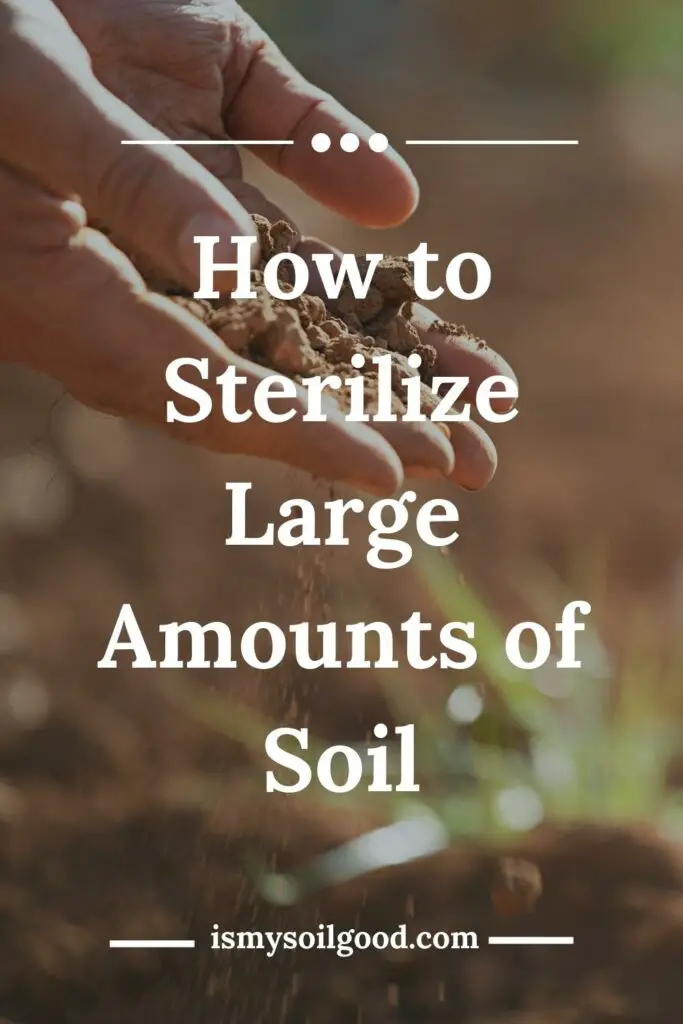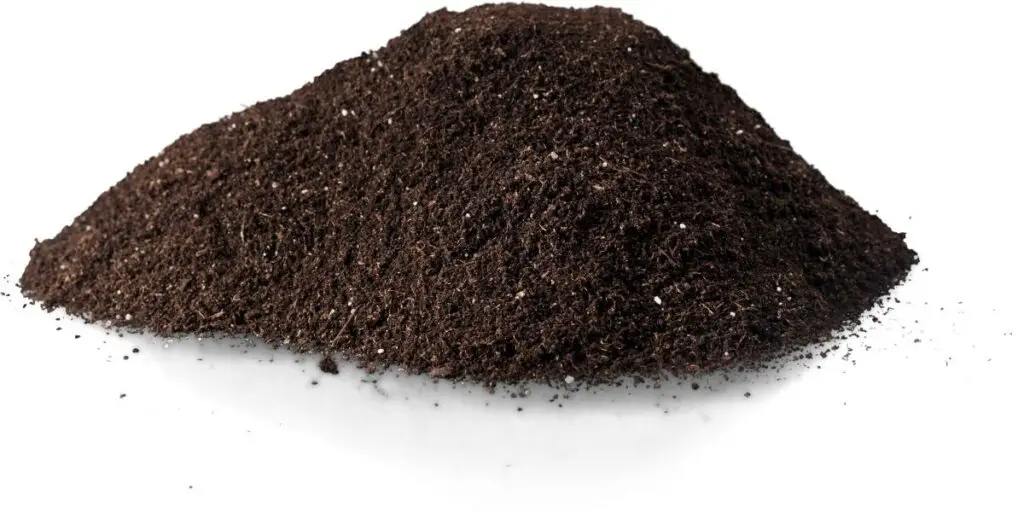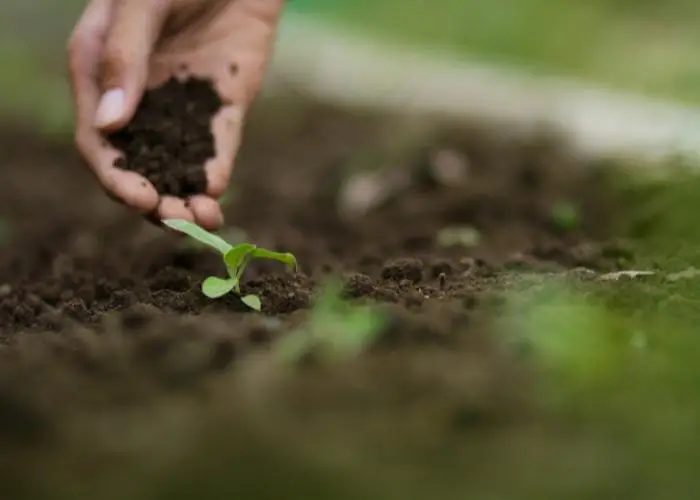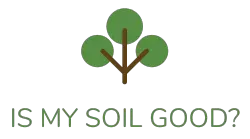We're an affiliate
We hope you love the products we recommend! Just so you know, we may collect a share of sales or other compensation from the links on this page. Thank you if you use our links, we really appreciate it!

Do you have a large amount of soil that needs to be sterilized? If so, you’re in luck! In this blog post, we will discuss how to sterilize large amounts of soil using different methods. Sterilizing your soil is important for preventing the spread of diseases and pests. It’s also necessary if you are growing plants for consumption. Soil sterilization is a process that kills all living organisms in the soil. This includes bacteria, fungi, viruses, and nematodes. There are several ways to achieve this goal, and we will explore them all in this post!
Table of Contents
How to Sterilize Large Amounts of Soil – Best Methods
There are several methods of sterilizing soil, and we will explore them all in this post. Each method has its advantages and disadvantages, so it’s important to choose the one that best suits your needs. Keep in mind that sterilizing your soil is not always necessary – it depends on the situation. However, if you are unsure whether or not to sterilize your soil, it’s always better to be safe than sorry!
1. Steam sterilization.
Steam sterilization is a popular method of soil sterilization. It involves boiling the soil in a steam chamber until all of the living organisms are killed. This method is effective, but it can be time-consuming and expensive.
2. chemical sterilization.
Another common method of soil sterilization is chemical sterilization. This involves using chemicals – such as bleach or boiling water – to kill the living organisms in the soil. Chemical sterilization is often quicker and less expensive than steam sterilization, but it can be less effective.
3. solarization.
Finally, solarization is a method of soil sterilization that uses the power of the sun to kill living organisms. Solarization is often used in warm climates, as it requires several weeks of exposure to direct sunlight. This method is effective and inexpensive, but it may not be practical in all situations.
Advantages and disadvantages of each method

Now that we have explored the different methods of soil sterilization, let’s take a closer look at the advantages and disadvantages of each one.
Steam sterilization is effective, but it can be time-consuming and expensive. It also requires special equipment, which can be difficult to find in some areas.
Chemical sterilization is quick and inexpensive, but it can be less effective than other methods. It also requires the use of harsh chemicals, which can be dangerous to handle.
Solarization is effective and inexpensive, but it may not be practical in all situations. It also requires a sunny location, which can be difficult to find in some areas.
Choosing the right method for your needs
Soil sterilization is a process that should be tailored to the specific needs of your garden or crop. There are several factors to consider when choosing a method of soil sterilization, including cost, effectiveness, and convenience.
If you are looking for a quick and easy way to sterilize your soil, we recommend using chemical sterilization. This method uses bleach or boiling water to kill the living organisms in the soil, and it is often quicker and less expensive than other methods. However, it is important to note that chemical sterilization can be less effective than other methods.
If you are looking for a more reliable way to sterilize your soil, we recommend using steam sterilization. This method is effective, but it can be time-consuming and expensive. It also requires special equipment, which can be difficult to find in some areas.
If you are looking for a more environmentally friendly way to sterilize your soil, we recommend using solarization. This method uses the power of the sun to kill living organisms. Solarization is often used in warm climates, as it requires several weeks of exposure to direct sunlight. This method is effective and inexpensive, but it may not be practical in all situations.
Sterilizing soil in an outdoor garden

If you are sterilizing soil in an outdoor garden, there are a few things to keep in mind. First, you will need to make sure that the room is well-ventilated so that the fumes from the chemicals do not harm people or animals.
Second, you will need to be careful not to damage any furniture or other objects in the room. Finally, you will need to make sure that the plants are not too close to the sterilization area, as they may be damaged by heat or chemicals.
FAQ’S
What is soil sterilization and why is it important?
Soil sterilization is a process that kills all living organisms in the soil. This includes bacteria, fungi, viruses, and nematodes. There are several reasons why you might want to sterilize your soil. Perhaps you are starting a new garden and want to prevent the spread of diseases and pests. Or, maybe you are growing plants for consumption and want to make sure that the plants are safe to eat. In either case, sterilizing your soil is an important step in ensuring a healthy garden or crop!
What is the effect of soil sterilization on plant growth
The effect of soil sterilization on plant growth is difficult to measure. Theoretically, the effects are most evident in the long-term stability and fertility of soils that have been sterilized.
However short-term studies show that there may be other factors at work. These include soil microorganisms, nematodes, and insects such as earthworms. All of these have an impact on plant growth, but the effect of soil sterilization is not always clear. In some cases, it may be beneficial to plant growth.
This is because sterile soils can provide a more stable environment for plant roots. They are also less likely to be impacted by diseases and pests. However, it is important to note that sterilization can also hurt plant growth. This is because it can lead to the depletion of essential nutrients in the soil. It is also important to consider the type of plants being grown. Some plants are more sensitive to sterilization than others.
Conclusion
In conclusion, soil sterilization is a process that should be tailored to the specific needs of your garden or crop. There are several factors to consider when choosing a method of soil sterilization, including cost, effectiveness, and convenience. It’s important to choose the method that best suits your needs so that you can achieve the desired results!

